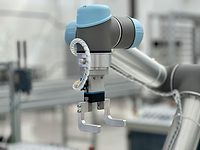How Are Electric Vehicle Battery Coatings Improving the Auto Industry?

Internal combustion engines (ICEs) are falling out of fashion to make way for battery electric vehicles (BEVs). Many components, including battery packs and power conversion parts, should have coatings to increase the car’s longevity, and to help with the issues BEV batteries bring.
Creative solutions are coming out of the industry to help maintain BEVs for longer. Just as it took time to develop long-term solutions for ICEs, mechanics and car manufacturers must adapt to the new technology as issues arise over long-term commercial usage. One of these solutions is BEV coatings. They have many benefits automakers embrace as the sector evolves and becomes more eco-friendly.
Here is what to know about battery electric vehicle coatings and what they mean for the future of the auto industry.
Improving the Auto Industry with BEV Coatings
The two major issues preventing BEV rechargeable lithium-ion batteries from performing at their highest are corrosion and vigorous electrical activity, stopping a battery and the car in its tracks. BEV coatings can also solve other problems, such as:
- Fire protection
- Impact protection
- Ultraviolet protection
- Temperature management
- Electrical shielding
- Weight maintenance
Advancements in BEV coatings are multipurpose, providing style with functionality and revealing benefits to the auto industry they could not have anticipated. Researchers are analyzing self-healing capabilities to remedy scratches. This demonstrates how coatings do more than the original intention, furthering the necessity for continued and dedicated development.
There is also the constant conversation of the weight spiral, as EV batteries burden vehicles to make other weight-increasing improvements. However, coatings are lightweight alternatives to traditional paints.
Hybrids and BEVs come at a premium cost to most car owners, and coatings attempt to mitigate that price tag by promising longer life and easier maintenance. Manufacturers made these vehicles with the planet’s conservation in mind. Therefore, improving this technology is vital for perpetuating this ideal.
Innovations on both sides are providing technical solutions to BEV problems. The climate conversation makes technological advancement urgent, adding pressure to eliminate as many roadblocks to continued change as possible. This encourages steady improvements for improving the auto industry.
Making Solutions with Powder and Electroplating Coatings
Coatings protect many of an EV’s parts. Application methods include powder or electroplating, each having different impacts on the look and performance of the car. Curing powder with heat, seals the coating to provide a practical or aesthetic touch, while electroplating requires electricity to apply layered elements like copper or silver. Plenty of variations in electroplating coating provide unique technical solutions to improve the auto industry.
Electroplating Coatings
Tin is a multipurpose metal that helps cars stay bright, with high resistance to humidity and acids, keeping even the most intense components under the hood intact. Nickel or tin plating often comes before copper, and this layering provides the necessary structure to deliver a thin coating. Copper acts as a diffusion barrier and protects parts from corrosion.
There is also silver, which has the advantage of softness, allowing it to conduct heat efficiently and making it solderable.
Electroless and electrolytic nickel plating provide similar functions with different applications. The amount of phosphorus in these compositions equates to the coating’s ferromagnetic nature. It gives a hardness, unlike other coatings, ensuring the body and parts do not suffer from elemental wear. They provide high salvageability and more, significant manipulation of the magnetic content to ensure nothing interferes with it.
These platings can also be mixed with aluminum passivation, helping create more acid- and weather-resistant vehicles. Dielectric protective coatings help provide excellent electrical insulation, protecting parts against oil and heat. Consider using it to coat parts prone to extreme temperature variances or wires that would be prone to short-circuiting, causing undesired contact with other components.
Powder Coatings
Epoxies are one of the most common powder coatings, providing critical resistance to chemicals and corrosion because of their toughness. They work well with other coatings to mitigate their vulnerabilities, such as extended sun exposure. Urethanes also provide similar protections, with durability excellent for parts like car rims. These solidify when cured with heat, creating a high impact- and shock-resistant shell.
Research for powder coatings reveals how manufacturers look to implement them due to environmental credentials, as they have no adverse effects on car performance while staying healthy for the planet. They are almost zero waste and created with nontoxic materials easily reclaimed for reuse. Powder coatings do not need reapplication often, making them low-maintenance solutions.
Shaping the Future of Battery Electric Vehicle Maintenance
Coatings will reduce the environmental impact required to make spare parts for continued replacement. This will save vehicle owners money, time, and resources in keeping their cars long term.
Some may view changing exterior color as purely aesthetic when the applications are functional. For example, coatings help reflect ultraviolet light, decreasing the frequency of air conditioning overuse. This only adds to the cooling benefits coatings provide batteries and motors. It prevents overexertion of the battery, helping the charge last longer. It also improves the auto industry by keeping buyers interested as richer and more innovative colors saturate the market.
There are not as many coating opportunities available for ICEs. EVs have two to four times more chances to utilize coating to improve the car’s performance. Coatings, adhesives, sealants, and paints are more versatile, given the different EV technologies, and they can withstand various tolerances. The coating technology needed to protect antiquated ICEs processes are not present in EVs.
It also creates a more environmentally friendly mentality surrounding the automotive industry. Maintaining parts is always a priority, but the waste will inevitably decrease by using coatings. Mechanics will use fewer resources to repair old parts.
Fewer manufacturers will waste resources creating new parts of ICEs. Instead, the industry will shift to mitigating the adverse side effects of EV technology with supplements that help with preventive maintenance and improve the car’s performance, a multipurpose benefit rarely seen with ICEs.
Coatings may also directly advance the progression of autonomous vehicles (AVs) by using reflective material to help read road signs. It will also help cars communicate with each other, potentially reducing previous concerns about AVs, including spatial awareness.
Battery Electric Vehicle Coatings Create a Safer Industry
BEV coatings are providing a more efficient and safer future for drivers. They can offer a unique aesthetic uniqueness to a vehicle, but the improvements to the auto industry cannot be ignored. These coatings are set to become the standard as the automotive sector adapts to a more environmentally friendly mindset and positions itself for progress.
Preserving parts for longer, and creating heftier machinery for greater wear, is the goal of battery-electric vehicles striving to create less waste for a more eco-friendly world.
Looking for a reprint of this article?
From high-res PDFs to custom plaques, order your copy today!






